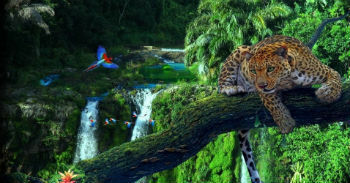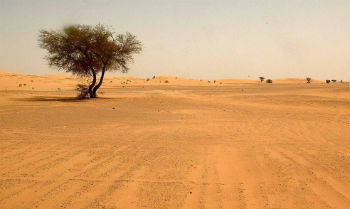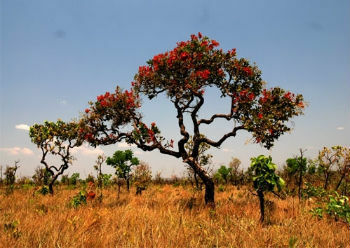Terrestrial ecosystems are portions of land inhabited by a set of living beings that interact with the region's own environmental characteristics.
The ecosystem is the set of living organisms and their physical and chemical environments, that is, the integration between biotic and abiotic factors.
Examples
The main types of terrestrial ecosystems are forests, deserts, grasslands and savannas.
Forests

Forests are environments with large amounts of trees, in which the crowns intersect and form a green "roof".
At tropical florests are the richest terrestrial ecosystems in biodiversity of the planet. Therefore, they represent highly complex ecosystems due to the numerous existing ecological relationships.
In Brazil, the Amazon rainforest and the Atlantic forest.
deserts

You deserts they are dry environments, with low rainfall and a hot and arid climate.
The vegetation of this ecosystem consists of grasses and shrubs, spaced apart. Many desert plants are xerophytes, adapted to a dry environment and able to prevent water loss.
Among the fauna elements are reptiles, insects and some rodents.
Prairies and Savannas

At prairies they are ecosystems existing in plains and covered by herbaceous vegetation. The tallest plants can reach up to 2 meters in height.
The prairie fauna is composed of birds, mammals, reptiles and insects.
In Brazil, an example of prairie is the pampa that takes place in the south of the country.

Savannas are ecosystems that occur in a tropical climate, with a dry and a wet season.
The vegetation is predominantly herbaceous and the existing trees are far apart.
An example of a Brazilian savannah is the thick.
Learn more about ecosystems:
- ecosystem
- aquatic ecosystem
- Biotic and abiotic factors
- ecological relationships
- Ecological succession
- What is Ecology?
terrestrial food chain
THE food chain represents the path of matter and energy in the ecosystem.
In a terrestrial food chain we have the following sequence: producer beings, consumers and decomposing beings.
- Producer: photosynthetic beings, like the tree.
- Primary consumer: herbivorous animals, such as insects.
- Secondary Consumer: animals that feed on herbivores, such as the anteater.
- Tertiary Consumer: larger animals that feed on other carnivores, such as the jaguar.
- Decomposers: beings that feed on decaying organic matter, such as fungi and bacteria
Biomes
Biomes represent the set of terrestrial ecosystems.
In Brazil, there are six biomes: Amazon, Cerrado, Caatinga, Atlantic Forest, Pantanal and Pampa.
All over the world we can find seven types of biomes: Tundra, Taiga, Temperate Forest, Tropical Forest, Savannas, Prairie and Desert.
The term biome is not applied to aquatic ecosystems.
Know more:
- Brazilian Biomes
- Biomes of the world
- Biosphere
Also find out about the Brazilian biomes:
See too: Food Chain Exercises

